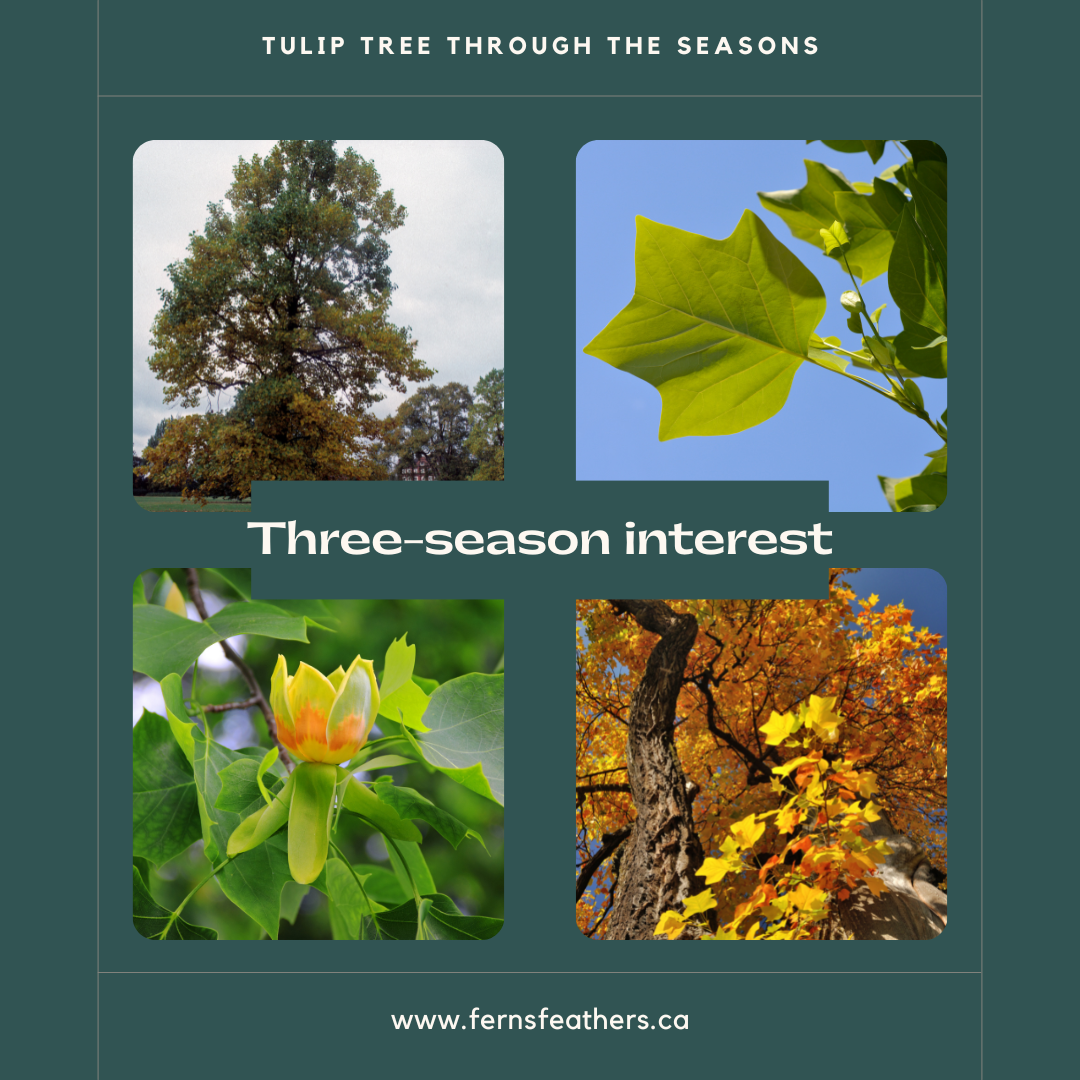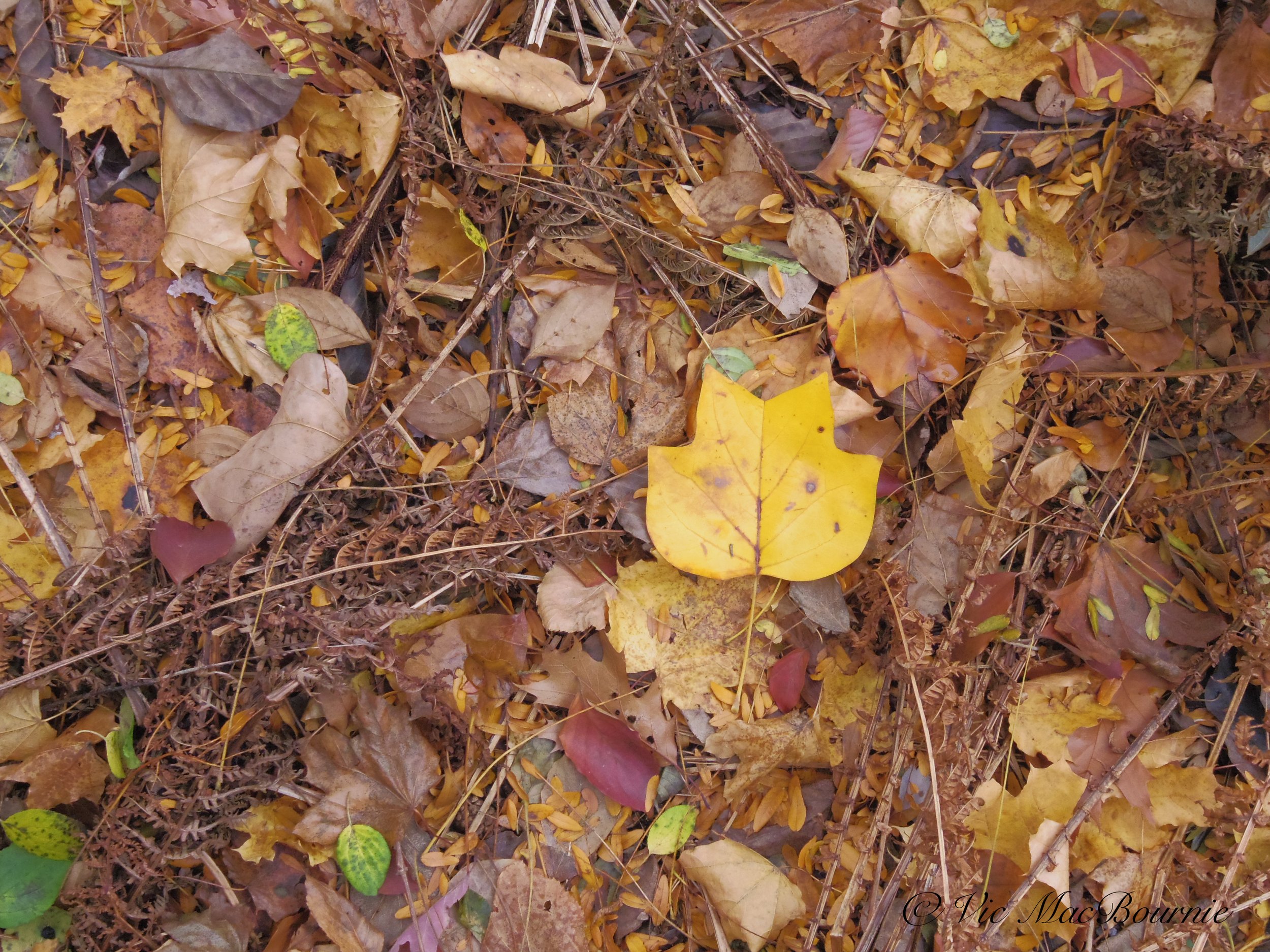Tulip Tree is good choice for fast growing native shade tree
If you are looking for a native tree that will provide fast growth, interesting spring flowers and help create shade and privacy in a hurry, the Tulip Tree might just be the perfect choice.
Shortly after purchasing our home 25 years ago, I took advantage of a local environmental group’s offering of two free native trees for interested homeowners. I chose a fast-growing Tulip Tree (Liriodendron tulipfera) for the back and a much slower single-stem serviceberry for the front of our home. (More on the Serviceberry in my earlier post.)
Both trees continue to impress 25 years later, but the varying growth rates really tell the story.
The Tulip tree is a rather large 4-5-storey shade tree that towers over even much older trees in the yard, while our serviceberry is still small by today’s standards barely reaching 1.5-storeys in height.
Although the Tulip tree is a fast grower, it generally does not suffer from many of the problems associated with fast-growing trees – not only behaving itself in its tidy oval growth habit, but surviving ice storms, snow and wind storms without shedding a single large branch.
They are native in zones 4-9 and can be found in northeastern United States, in the Carolinian zone into southern Ontario – on the south shore of Lake Huron, the north shore of Lake Erie and in the Niagara Peninsula. (For more on the trees and plants of the Carolinian zone, check out my earlier post here.
Tulip tree leaf among the spent ferns in B&W.
Tulip trees grow well in most conditions including acidic, loamy, moist, sandy well-drained and clay soils. Although they prefer sufficient moisture, they can can tolerate drought in more humid areas once established.
Their fast growth requires deep and wide-spread roots.
How fast do Tulip Trees grow?
Again, this is considered a fast growing tree, ideal for an empty yard looking for a quick shade tree. In saying this however, it is not considered a weed tree that will quickly take over your yard with fast, weak growth. A happy tree growing in the right conditions will experience annual increases in height of up to 24-inches (60.9 cms) or two feet a year.
These trees do best in full sun where they’ll reach mature heights of 70- to 90-feet (35 metres) with a 40-foot 12.19m spread. The trunk can reach up to 160 centimetres in diameter.
How did Tulip Trees get their names?
Tulip trees sport bright green leaves in summer that some might describe as resembling tulip flowers in profile. The leaves are 7 to 12 centimetres long with 4 lobes and the bark fo the tulip tree is smooth and dark green with the tree is young , turning brown and ridged with age.
In spring (usually May and June) tulip-like, greenish-yellow flowers with a splash of orange at the base bloom high in the tree canopy. The flowers have six petals and are about 1.5 to 2-inches in diameter (5 centimetres long). They are often difficult to see because they bloom so high in the tree. A pair of binoculars will go a long way to help identify them and provide you with a nice close up view of these lovely flowers.
Do tulip trees support wildlife?
Although tulip trees are native to areas of both the United States and Canada, they are not considered great trees to support native wildlife.
While the seeds of the tulip tree grow every year and are a source of food for both birds and mammals, Douglas Tallamy, in his excellent book Bringing Nature Home, How you can sustain wildlife with native plants, describes the tulip tree in the following way: “Unfortunately it is one of the least productive forest species in terms of its ability to support wildlife – insects and vertebrates alike.”
(Want more from Douglas Tallamy’s book Bringing Nature Home? Click on the link for my full review.)
He goes on to say that if you want to attract Tiger Swallowtails to your yard, tulip trees are a source of food for their caterpillars (Lepidoptera).
Tallamy writes: “For those who become serious about increasing animal diversity in their gardens, it is important to recognize that all native plants are not equal when it comes to supporting insect herbivores and thus other forms of wildlife. For a variety of reasons, some plant species host many dozens of specialist herbivores, while others host only a few. For example, poison ivy, ferns, and tulip trees are among the plants that few extant insect species have the ability to eat, while oaks, willows and cherriesare at the other end of the spectrum , hosting 1,400 species among them.”
What does all this mean? It means that if you are looking for a tree with maximum benefit to wildlife, the tulip tree may not be the best choice. But, if you are looking for a tree that is not susceptible to a lot of insect and caterpillar damage, but still supports some bird and insect species, the tulip tree is a good choice.
I say, go ahead and plant one but don’t forget to plants a cherry, oak or willow tree too to provide maximum benefit to wildlife.
More features of Tulip Trees
• Seeds of the tulip tree grow every year and are a source of food for birds and small mammals.
• The trees are known to grow in a pleasing oval shape with a good spread but not one that would dominate a smaller backyard.
• The trees have aromatic stems that are pleaseant if broken off.
• Their fall colour is impressive as the leaves slowly turn a vibrant yellow and steal the show from many a tree in their vicinity.
• Colourful seeds cling to the tree in an upright position throughout the summer and into autumn
• At first glance the leaves may resemble a type of maple tree. On closer inspection, however, the alternating leaves that are 3-6 inches long with distinctive lobes, a flat base and two ear-like tips resemble a cat’s head with its two pointed ears.




